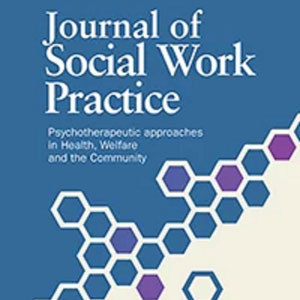

Adolescents experiencing complex trauma are often isolated and avoid relationships with high intimacy, trust, or attachment, which can lead to increased interpersonal difficulty and poor boundary observance ( Johnson & Lubin, 2015 van der Kolk, 2005). Tucker, Smith-Adcock, and Trepal (2011) articulated the differences between normative disruptions in relationships (for example, disagreements) and more severe disconnections that are rooted in trauma. Within typical development, perhaps the greatest set of challenges and growth for early adolescents revolves around social development, including forming and maintaining healthy relationships and beginning to individuate from family. Literature Review Impact of Trauma Exposure on Early Adolescent Developmental Tasks Social Development We present two clinical cases as examples of trauma-informed, school-based practice, and then apply their experience working in an urban, public middle school to explicate intervention theory and practice for school social workers. The model uses psychoeducation, cognitive differentiation, and brief stress reduction sessions to promote socioemotional development and academic progress. As to the latter, we will outline and discuss the Animating Learning by Integrating and Validating Experience (ALIVE) program, a school-based, trauma-informed intervention that is grounded in a public health framework. Rather, it begins with a synthesis of how exposure to trauma impairs early adolescent developmental tasks.

In reference to the former, this article will not focus on the general impact of toxic stress, or chronic trauma, on early adolescents in the school setting, as this work has been widely documented.

This article follows the twofold call by Walkley and Cox (2013) for school social workers to develop a heightened awareness of trauma exposure's impact on childhood development and to highlight trauma-informed practices in the school setting. Without comprehensive and effective interventions in the school setting, seminal adolescent developmental tasks are at risk. To address this vulnerability, school social workers should be aware of public health models promoting prevention, data-driven investigation, and broad-based trauma interventions ( Chafouleas, Johnson, Overstreet, & Santos, 2016 Johnson, 2012 Moon, Williford, & Mendenhall, 2017 Overstreet & Chafouleas, 2016 Overstreet & Matthews, 2011). The manifested trauma symptoms of these students have been widely documented and include self-isolation, aggression, and attentional deficit and hyperactivity, producing individual and schoolwide difficulties ( Cook et al., 2005 Iachini, Petiwala, & DeHart, 2016 Oehlberg, 2008 Sajnani, Jewers-Dailley, Brillante, Puglisi, & Johnson, 2014). school system there is growing awareness of how traumatic experience negatively affects early adolescent development and functioning ( Chanmugam & Teasley, 2014 Perfect, Turley, Carlson, Yohannan, & Gilles, 2016 Porche, Costello, & Rosen-Reynoso, 2016 Sibinga, Webb, Ghazarian, & Ellen, 2016 Turner, Shattuck, Finkelhor, & Hamby, 2017 Woodbridge et al., 2016). Case examples from the authors’ clinical work in the New Haven, Connecticut, urban public school system are provided. This public health model uses psychoeducation, cognitive differentiation, and brief stress reduction counseling sessions to facilitate socioemotional development and academic progress. Following the call by Walkley and Cox for more attention to be given to trauma-informed schools, this article provides detailed information about the Animating Learning by Integrating and Validating Experience program: a school-based, trauma-informed intervention for middle school students. This article summarizes how traumatic events impair and complicate these developmental tasks, which can lead to disruptive behaviors in the school setting.

Middle-school-age children are faced with a variety of developmental tasks, including the beginning phases of individuation from the family, building peer groups, social and emotional transitions, and cognitive shifts associated with the maturation process.


 0 kommentar(er)
0 kommentar(er)
